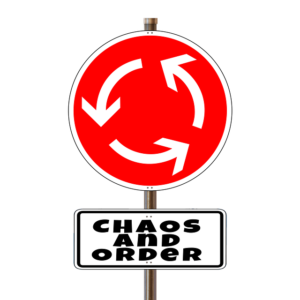by Jayme Radomski | Oct 9, 2018 | Clutter, Wardrobe
The cool weather is here and it is time to organize your fall and winter wardrobe. Here are some basic steps for refreshing your wardrobe for the cool seasons ahead.
1. Pack Away Summer Items
 Take all spring and summer items out of your closet and dresser. Have all your items cleaned before placing them in storage. Moths love food remains and sweet smelling scents. Use storage containers that will allow air to flow. You don’t want to trap any moisture into the fabrics by sealing up your clothing in plastic bags and containers. Store the clothing and shoes away from your fall and winter shoes and clothing. Storage areas could be an extra closet, basement, attic, or simply in the back of your closet.
Take all spring and summer items out of your closet and dresser. Have all your items cleaned before placing them in storage. Moths love food remains and sweet smelling scents. Use storage containers that will allow air to flow. You don’t want to trap any moisture into the fabrics by sealing up your clothing in plastic bags and containers. Store the clothing and shoes away from your fall and winter shoes and clothing. Storage areas could be an extra closet, basement, attic, or simply in the back of your closet.
2. Organize Fall and Winter Items
All fall, winter and year-round items should be pulled out of your dressers and closets. You will want to sort items into categories; piles of pants, tops, sweaters, shoes, scarves, etc. Take some time to assess what pieces serve you well, what pieces can be removed and what pieces should be replaced. Before returning the items to your closet and dresser, neatly fold and hang them. If any items need cleaning, take care of this so your wardrobe is clean and ready for the season.
3. Remove Items
This is a great time to assess your wardrobe. Donate and consign items that no longer serve you. Women’s centers are always delighted to take in clothing. Consignment sales, such as Divine Consign, are a great way to recoup some of your investment, and purchase items to complete your current wardrobe.
4. Replace Basics
Replace items that are stained, stretched, faded or no longer fit. Adding some fresh new basics to your wardrobe can make seasonal favorites feel fresh and new. This is also a great time to update undergarments and socks.
If wardrobe changeover and organizing is overwhelming, a professional organizer can help. See if Top Shelf Home Organizing can help you on your journey. Contact Jayme to schedule a consult or chat about organizing.
by Jayme Radomski | Aug 21, 2018 | Cleaning, Clutter
 Fall brings the feeling of nesting for us all. The season change and a cold winter ahead has us planning and preparing. Getting a start on fall organizing will make your fall more relaxed. Here are some things you can do right now to prepare.
Fall brings the feeling of nesting for us all. The season change and a cold winter ahead has us planning and preparing. Getting a start on fall organizing will make your fall more relaxed. Here are some things you can do right now to prepare.
Garage Organizing
With any organization process, the key to cleaning is clearing away the clutter.
- Spread everything into your driveway, to go through everything you’ve piled into the garage.
- Group by use such as toys, tools, garbage and equipment.
- Get rid of anything you haven’t used in two years.
- Get rid of anything broken, or otherwise considered junk.
- Buy hooks and shelves to get as much as you can off the floor. Storage is important. Peg boards, wall shelves, rolling carts and wall hooks should be used whenever possible.
- Buy clear bins with labels to help keep smaller items organized and easy to find when needed. Consider open bins for toys and equipment that are frequently accessed.
- Mark areas where items get stored such as labels on the walls and shelves, and painter’s tape on the floor.
Outside Organizing
With your outdoor areas packed up, you can enjoy the cooler month’s guilt-free and tucked indoors.
- Take care of and pack up your outdoor living items.
- Clean any pieces you plan to store: cushions, hammocks, umbrellas.
- Stack patio furniture and cushions, and store in your garage or on a covered porch. If you don’t have the room, you can leave furniture outside with heavy-duty waterproof furniture covers. These will stand up to winter weather and keep everything protected. Most granite pieces can withstand the elements so you can leave those alone, but softer stones like cast stone, marble or manufactured stone should be either covered or moved.
- Clean and cover your grill, but you don’t need to pack it away. Keep your grill available for grilling all winter.
Yard Organizing
The beginning of fall is the perfect time to prep your lawn for a lush spring. You won’t be planting any new plants, but you’ll want to prep your green areas for the impending cold. And cooler temperatures mean you won’t be boiling in the summer sun while you work outdoors in the yard.
- Reseed any bare spots in your lawn and use a winter fertilizer that builds resistance to the cold.
- Prepare for the fall and winter by fertilizing, mulching and pruning shrubs and trees.
- Always rake fallen leaves.
- Plant bulbs for spring flowers.
Kitchen Organizing
- Pull out summer entertaining items and outdoor dishes to free up space in your cabinets and countertops.
- Clear the pantry of summer convenience foods.
- Before your next trip to the grocery store (or delivery), empty the refrigerator. Toss items that are expired.
- Wipe down all shelves and walls of the refrigerator.
- Inventory what food items you have and plan some meals around those items.
- Jot down some favorite fall meals to make your meal planning a bit easier.
Enjoy the cooler weather. Remember to take your organizing journey one step at a time. Focus on what matters and what will have the biggest impact for you.
If finding the time and creating a strategy to organize is overwhelming, a professional organizer can help. See if Top Shelf Home Organizing can help you on your journey. Contact Jayme to schedule a consult or chat about organizing.
by Jayme Radomski | Aug 7, 2018 | Organizing
 In March, I shared with you, general tips on how to save time. These ideas included staying organized (of course!), identifying time wasters, making the most of running errands, finishing what you start, readjusting priorities, keeping healthy snacks on hand and outsourcing where it makes sense.
In March, I shared with you, general tips on how to save time. These ideas included staying organized (of course!), identifying time wasters, making the most of running errands, finishing what you start, readjusting priorities, keeping healthy snacks on hand and outsourcing where it makes sense.
This month, I would like to share with you how I personally try to be more efficient and save time. Like you, I too juggle family, jobs, bosses, meals, schedules and fun. Here are my go-to concepts for saving time and reducing stress.
Kitchen Time Savers
Kitchen time is not enjoyable for me, but I know the importance of good nutrition. I use a couple resources to help with this.
Meal planning
Each week I have a simple plan for meals. I don’t make large, multi-course meals, but I will always have a refrigerator stocked with fresh fruits and vegetables, and a pantry full of nuts and seeds. Meals are always prepared for plenty of leftovers. I also leave a day or two for take out or going out to eat.
Health Heather with Better Health by Heather has been wonderful with helping to keep our meals on track, limit processed food and eat meals to sustain energy throughout the day.
Prepared Meals Jess with Cream City Casseroles has been a huge time saver for the weekday chaos. Her casseroles are made from scratch weekly, and are delivered frozen on Wednesdays. My kids love them. Her menu changes monthly. We haven’t had the same casserole yet this year!
Grocery Orders
I have an ongoing shopping list with Woodman’s online grocery delivery service. Every week, I import my standard list into the shopping cart and then make changes and additions based on the meal plan for the week. I no longer spend three hours grocery shopping each week.
Laundry Time Savers
I have a laundry day. Instead of running a load or two of laundry each day, I do it all in one day. On laundry day, I do not schedule any other appointments or meetings. To complete one week of laundry for six people, it takes six hours of non-stop focus. This includes sorting and stain treating to folding and putting away. Doing laundry in one day saves time overall because I fold, sort and put away one time. Doing laundry multiple days would force me to repeat the same process multiple times.
Cleaning Time Savers
We do not allocate funds for a full service house cleaner. Instead, our cleaning assistant, Jackie, comes every other week for three hours. She focuses on the main areas of the house, alternating certain details each visit. I handle the other areas (office, bedrooms and bathrooms). Having Jackie help works two-fold: the house has to be tidy so she can see the areas that need to be cleaned, and it forces me to do my share of the cleaning. My house stays clean without breaking the bank.
Keeping a Master Calendar
Everything goes in the Google calendar. All entries include first names of who is involved, addresses and any other pertinent information. All calendar items are differentiated to show which items are family, business related, and so on. I can then print the family calendar so the kids know what to expect each day, and my husband is always in the loop of appointments and activities. I can rest easy each evening since all the next day’s activities are scheduled to the minute.
Creating Lists
Lists keep me accountable, focused, structured, and also help to reduce stress. A small notepad is in my bag at all times to make my lists. This is used to jot down things that come up throughout the day, reminders, shopping lists, and notes during client meetings all go in my little notebook. There are great apps for this same thing, but I find my notebook to work best. My husband likes to use Trello to track all of the household projects that he is involved in. There are many list making apps available including Wunderlist, todoist and Evernote.
Sticking to a Limited Wardrobe
My wardrobe consists of a limited number of items that mix and match, and can go from running kids around, to consultations with clients, to teaching college lectures, to volunteer work, to dinner prep., and running kids around again. It is a capsule wardrobe of sorts. My good friend LeAnn Conway with Conway Image Consulting helps me with the selection of each item (she’s great). I have some personal restrictions: no dry clean only, no wardrobe changes throughout my day (with the exception of tossing on a blazer or sweater), and no heals. What I put on in the morning has to take me through the entire day.
Packing Swim and Sports Bags in Advance
Gym bag, swim bag and sports bags, stay packed and stocked. This way we are not running around last minute to grab swim suits, soccer cleats and baseball socks. As soon as it’s washed, it’s back into the bag.
Organizing Help
Despite my ability to be organized, I still struggle to get projects done. Having Jeanne, my organizing assistant, come help me with projects, allows me to schedule time to stay focused on the project in front of me. She keeps me accountable, offers another perspective and keeps me on track.
“Three hours working with an organizer is like 12 hours of working on my own.”
My Advice to you: Outsource
Where it makes sense, outsource. Look at the value of your time. It may make sense to outsource a couple tasks, in order to help you focus your time on more important items. Consider getting help with cleaning, laundering, yard maintenance and meal preparation. Your family may be the first option for help in these areas.
by Jayme Radomski | Jul 3, 2018 | Busyness, Clutter
 Getting organized will save you time and money. Here are six ideas on how this can really happen.
Getting organized will save you time and money. Here are six ideas on how this can really happen.
- Meal Planning
When you plan meals, you spend less money at the store (or eliminate a trip to the grocery store altogether), eat healthier and waste less food. Having a plan prevents impulse purchases of overpriced convenience food and last minute carryout meals. When you know what food you have in your pantry, you can build meal plans around the ingredients you already have.
- Sell your clutter
Sell the items you no longer use or love, and the items you have multiples of. In addition to making a little cash, you will love the extra space to breathe.
- Limit repeat purchases
Getting organized helps you keep track of what you own so you don’t run out to purchase something that you can’t find. Like items get placed with like items… you’ll soon discover how many bottles of sunscreen and kitchen spatulas you actually own.
- Late fees vs. discounts
You’ll avoid late fees, and you’ll be able to see new ways you could save on your expenses. Instead of spending time trying to settle delinquent bills, you can ask your providers for discounts for being a good customer. Being on top of bills and due dates will keep your budget on track.
- Save time
Once you’re more organized, you will spend less time trying to find things and making multiple runs to the store. You can use that extra time for to be more productive, make more money to pay off your debts or add to your savings. Also, once you realize what you own, you will less likely go out shopping. This will save time, money and gas… double bonus!
- You’ll discover more ways to save
Once you get rid of the clutter in your house, you’ll free your mind up to figure out more ways to cut back or earn more. You will also see how little you really need, realizing you do not need to shop.
If planning and orgainzing are overwhelming, a professional organizer can help. See if Top Shelf Home Organizing can help you on your journey. Contact Jayme to schedule a consult or chat about organizing.
by Jayme Radomski | Jun 5, 2018 | Busyness, Productivity, Work & Home Office
 Productivity is all about being efficient and accomplishing more in less time. Schedule your day to be the most efficient you can be by having a plan for every day.
Productivity is all about being efficient and accomplishing more in less time. Schedule your day to be the most efficient you can be by having a plan for every day.
Here are a few tips to make the most of your day whether you work in your home, run a business, or work for a large company.
- Difficult Tasks
Schedule your most difficult, undesirable tasks for the time of day when you are most focused. For many, this time is first thing in the morning. And doesn’t if feel good to get it out of the way?
- Meetings
Prepare, review and stick to a meeting agenda to ensure everyone stays on topic. Issues that may come up during a meeting can wait to be discussed at a later time with only the people involved. Set up video conferencing equipment ahead of the meeting so you can tackle the agenda on time and save everyone valuable minutes with each meeting.
- Communication
Schedule a couple times in your day where you devote time to checking and responding to emails, voicemails and messages. Having a set time to do this will help you avoid being interrupted throughout the day, and keep you focused on the project you intend to accomplish. Also, use the phone to communicate more often versus the never ending back and forth of email and other messaging communications.
- Breaks
Schedule blocks of breaks throughout your day to keep your mind fresh.
- Me Time
Schedule me time every day. Taking time first thing in the morning to focus on your health and faith will get your day off to a good start.
- Checklists
Use a checklist for daily repetitive tasks. This will keep you focused and help minimize errors in the tasks you do everyday. Also, create a weekly checklist to help keep your week on task, so you can accomplish your goals. Create your weekly checklist at the end of the previous work week so your week is off to a strong, focused start.
- Work Space
Keep your work space neat and organized to ensure focus. Keep only the current project on your desk. If it makes sense, plan certain tasks to be completed offsite or at home. Offsite work allows for focus without the office interruptions and can save commute time.
If scheduling and organizing are challenging, a professional organizer can help. See if Top Shelf Home Organizing can help you on your journey. Contact Jayme to schedule a consult or chat about organizing.
by Jayme Radomski | Apr 17, 2018 | Cleaning, Clutter
 Spring cleaning for some is a chore for others a joy. However, the result of a thoroughly cleaned home brings lightness and freedom to everyone.
Spring cleaning for some is a chore for others a joy. However, the result of a thoroughly cleaned home brings lightness and freedom to everyone.
Spring cleaning items:
- Strip the beds down to the mattress and wash all linens.
- Clean the frames and headboards of beds.
- Moved and empty furniture and wash baseboards.
- Clean ceiling fans.
- Empty china cabinets and give them a good cleaning.
- Empty every inch of each closet and inventory, value assess, wash and clean surfaces, and organize clothes in a useful and efficient way.
Effectively spring cleaning means no corner is left untouched by brooms, dusters, scrub brushes, rags and other cleaning weapons.
The task of spring cleaning is big. But, if you break it down into daily tasks, your home can be fresh, clean and organized before the kids get out of school. Although I’m personally not a cleaning expert, I do love a clean house. For some great cleaning resources check out cleanmama.net, and their free printable’s like their spring cleaning checklist.
You will feel a change of energy in your home and in your self after a day of thorough de-cluttering and cleaning. Your home will feel lighter, brighter and more cheerful.
The best part of de-cluttering and organizing for me is hearing my clients describe similar feelings of lightness and freedom after a session together. Whether organizing a home or office, de-cluttering can be a cathartic passing of the old and the start of a whole new season in life.
What are your plans this spring?
Is a cluttered room or desk stopping you from enjoying your home or office the way you’d like to enjoy it? Have your dust bunnies proliferated beyond a reasonable limit? Do you find spring-cleaning to be a daunting task of Olympian magnitude? Has it never even occurred to you that a good spring-cleaning would be appropriate at the office?
If organizing and cleaning is overwhelming, a professional organizer can help. See if Top Shelf Home Organizing can help you on your journey. Contact Jayme to schedule a consult or chat about organizing.
by Jayme Radomski | Mar 7, 2018 | Busyness
 Most of you are busy professionals juggling the demands of your career and your family. Getting it all done while taking time for yourself is taxing. Consider these seven tips to help you streamline your schedule and save time.
Most of you are busy professionals juggling the demands of your career and your family. Getting it all done while taking time for yourself is taxing. Consider these seven tips to help you streamline your schedule and save time.
- Stay organized. Use a calendar to write down all your work and family engagements, addresses and phone numbers. Keeping all the information in one place can keep you from wasting time looking for it later.
- Identify time wasters. Keep track of the ways you waste time for one week. Do you spend 10 minutes finding your keys? If so, make a key hook by your door-and use it. Schedule time to check social media and check email each day. Start to plan meals to avoid daily stops at the store.
- Make the most of your trips. Knock a few items off your list on the way to work or at lunch, freeing up some night and weekend time.
- Finish what you start. When you work on a project from start to finish, it’s one less item on the to-do list. Having many unfinished projects at home and work is stressful and overwhelming.
- Readjust priorities. Since you can’t really do it all, re-evaluate which activities really need your time and focus. Think about what has the most value to you, your career and your family, and eliminate the rest.
- Keep healthy snacks on hand. Fresh fruits and vegetables, Kind bars and plenty of water will keep you fueled throughout your busy day. Identify hunger and thirst right away and have snacks available. This will prevent quick stops at drive through coffee shops and fast food restaurants.
- Outsource where it makes sense. Look at the value of your time. It may make sense to outsource a couple tasks to help you focus your time on more important items. Consider getting help with cleaning, laundry, yard maintenance and meal preparation. Your family may be the first option for help in these areas.
by Jayme Radomski | Feb 9, 2018 | Busyness, Mindfulness, Nesting
 Do you have a ton to do and have no idea where to start? Would you like to know with each step you take you’re heading in the right direction? Would you like to narrow your ‘to do’ list down to a few key items and let go of the rest? Would you like to work smarter, not harder?
Do you have a ton to do and have no idea where to start? Would you like to know with each step you take you’re heading in the right direction? Would you like to narrow your ‘to do’ list down to a few key items and let go of the rest? Would you like to work smarter, not harder?
Answer these six questions to find your focus, do what you want to do and feel great about your life while you’re doing it.
1. What do I care about most? Where is my heart leading me?
Asking this question will give your heart a space to speak and be heard. When we get wrapped up in all the ‘stuff’ we have to do we often overlook what our heart wants.
2. What do I really want to do? Is this truly what I want?
Doing what you really want is a process of identifying and letting go of the things that you don’t want and replacing them with things that you do want. Overtime you’ll rebalance your life to include more of what you want to do.
3. How will I feel while I’m doing what I’m doing? Will this bring me joy?
If what you’re doing doesn’t give you pleasure while you’re doing it, you may be on the wrong track. ‘Doing’ takes up much more time than the actual result. We reach each goal only once and then it’s over. The journey to our goals is what fills our life with experiences. If you’re not feeling good during the ‘doing’, it may not be worth it. Give yourself permission to do things that feel good and you’ll live an inspired life.
4. What purpose will this serve?
If the answer isn’t clear you may be letting life lead you.
This question helps you make better choices for your life. Basing your actions on a clear purpose puts you in the driver’s seat which means you are leading your life instead of letting it lead you.
5. What is the priority of each item on my list?
We make choices about what we’re going to do all day long, but how often do we make choices after asking ourselves the first four questions above? Answering the above questions first, will guide you to living a more fulfilling life.
6. How am I going to do it?
After narrowing your focus create a mini action plan for each item. Write down the steps you’ll need to take to make it happen. Focus on one or two things at a time. Don’t try to do everything at once. Give yourself a chance to worker smarter and you will get more done.
Before jumping into your ‘to do’ list, take some time to reflect upon these questions. By doing so you’ll put yourself on a life and/or business path that reflects more of what you really want. Determine your FOCUS first and you’ll experience more fulfillment.
by Jayme Radomski | Jan 17, 2018 | Clutter, Mindfulness, Nesting, Productivity
 Do you walk in the house after a long day at work and just sigh at your cluttered house? Have you planned to organize one morning but just did not know where to start or were just not in the mood?
Do you walk in the house after a long day at work and just sigh at your cluttered house? Have you planned to organize one morning but just did not know where to start or were just not in the mood?
Are you caught in a vicious cycle: as soon as you organize one room another one has turned to chaos? Maybe you just need to prioritize, find motivation, and ask for help. Easier said than done?
Here is how to get started:
Prioritize
As with most goals in life, you want to strive for progress and improvement, not perfection. Most of us do not have time to achieve perfection in everything we do and still live a happy, fulfilling life. When you set goals, make them achievable, attainable. When you make that progress, create a visual way to track it or remind yourself of all you have accomplished. Since we will never have more than 24 hours in a day, we may have to say “no” to some activities and tasks.
As you list each goal, task, or activity, ask yourself if it is necessary, if it supports your ultimate goals, or if any other activity or person will be negatively affected if it does not happen. You may see your list shrink before your very eyes. If you are not sure how to narrow your list, search the internet, ask a friend, or consult a professional organizer (we help with both the tangible and intangible).
Motivate
Do you start the day with the best of intentions to declutter the bathroom only to lose your drive because it is “just not worth it?” What is worth it to you? What do you value? Why? These questions may not seem to have much to do with organizing, but they can be the key to your motivation. How much time do you spend on activities that relate to your values? Most of us would probably answer “not enough.” Then why would you ever spend time on an activity not related to your values, such as organizing?
The answer: organizing allows you to focus more on your values. Organizing means less time searching for the other shoe, fewer arguments over who last used the scissors and did not put them back, less time cleaning around the clutter. With less time wasted, you have more time to be with family, exercise, eat healthy, and pursue those life goals that really matter. The next time you wonder why you would ever make time to organize, remember that organizing can be a means to an end. If you find a task that seems pointless, ask yourself how that task can bring you closer to what means the most to you. It is amazing how a change in attitude and knowing what is in it for you can motivate.
Ask for Help
Even if most of your chores and daily tasks are “value added”, they are not always fun and often too much for one person. Solution: spread the responsibility among the whole household. What is boring to one person may be fun for another. One person’s weak spot may be another person’s strength. Some people have time in the morning to help everyone get ready for the day, and others have more time at night to help everyone get ready for bed. When you do ask for help, just remember to be specific or be prepared for the help to be not exactly what you expected. Letting others pick what they want and find their own way, within reason, may even make them more willing and productive.
If organizing is overwhelming, a professional organizer can help. See if Top Shelf Home Organizing can help you on your journey. Contact Jayme to schedule a consult or chat about organizing.
by Jayme Radomski | Nov 16, 2017 | Relationships, Holidays
 When is the last time you snapped at your husband or were short fused with the kids because the house was a mess? Are you hanging on to old bad relationships and old stagnant items?
When is the last time you snapped at your husband or were short fused with the kids because the house was a mess? Are you hanging on to old bad relationships and old stagnant items?
There is a link between organization and personal relationships. Overall, organizing improves how you feel. This can have a positive effect on your personal relationships.
How Does Organizing Help Relationships?
Being disorganized distracts you from your priorities. Whereas, removing clutter frees space for fresh ideas and fresh relationships. It helps you move onto the next step in your life. Clearing the clutter also helps you to rid the people and things that bring bad memories and bad feelings. Plus, getting organized isn’t about the stuff. It is about what the stuff does to you and your personal relationships. Being organized will help you stay focused, achieve your goals and seek clarity. In addition, it will improve the relationships that matter most to you.
Having an outsider help you get organized will provide an objective opinion. Then, you won’t strain or stress over the organizing process.
How Professional Organizers Can Help
Professional organizers can help those of us too busy, too confused, too tired, or too stressed to deal with clutter ourselves. In fact, getting help from an organizer is no different than getting help with any other thing you may not be able to do, or have time to do on your own. Organizing requires professional help just like taxes, real estate, legal matters, investments, and retirement accounts. More importantly, organizers have effective systems and processes. Which make them more efficient, improve time management, and improve daily routines. Organizers can also provide professional resources such as; closet companies, movers, art appraisers, garage companies, and painters. They also have resources such as; auction houses, organizing products and stores, junk companies, shredding companies, consignment stores, photo and paper scanning companies and contractors.
If you need help reducing your clutter to improve your personal relationships, see how Top Shelf Home Organizing can help you on your journey. Contact Jayme to schedule a consult or chat about organizing.
 Take all spring and summer items out of your closet and dresser. Have all your items cleaned before placing them in storage. Moths love food remains and sweet smelling scents. Use storage containers that will allow air to flow. You don’t want to trap any moisture into the fabrics by sealing up your clothing in plastic bags and containers. Store the clothing and shoes away from your fall and winter shoes and clothing. Storage areas could be an extra closet, basement, attic, or simply in the back of your closet.
Take all spring and summer items out of your closet and dresser. Have all your items cleaned before placing them in storage. Moths love food remains and sweet smelling scents. Use storage containers that will allow air to flow. You don’t want to trap any moisture into the fabrics by sealing up your clothing in plastic bags and containers. Store the clothing and shoes away from your fall and winter shoes and clothing. Storage areas could be an extra closet, basement, attic, or simply in the back of your closet.








